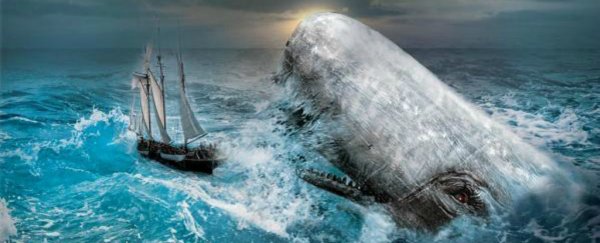Scientists now think Moby Dick may have been able to sink ships five times his size without fatally fracturing his skull. Of course, the giant white sperm whale is a fictional character, but Herman Melville's classic tale was inspired by a whaler's tale which has been doubted by scientists for nearly 200 years.
"After a large male rammed and sank his ship in the Pacific in 1820, whaler Owen Chase described the whale's head as admirably designed for this mode of attack," University of Queensland researcher Olga Panagiotopoulou said.
"The theory was instrumental in inspiring Herman Melville's novel Moby Dick, but until our research, its mechanical feasibility had never been addressed," he added.
"The scientific community received the ramming hypothesis with reluctance. This was mainly because the front part of the sperm whale head houses sensitive anatomical structures that are essential for sonar communication between whales, and they would be in harm's way in a ramming event."
Panagiotopoulou is an expert in the anatomy, bone biology, and mechanics of large animals, including elephants and non-human primates.
Her research team from Australia, the UK, the USA and Japan used structural engineering principles and computer models to test how the sperm whale's head might withstand ramming impacts.
What they found was "one of the strangest structures in the animal kingdom".
While ramming a ship five times its size could certainly cause a fatal skull fracture, "connective tissue partitions within the junk of the sperm whale forehead may function as a shock absorber," Panagiotopoulou said.
"This mechanism is important to reduce impact stress and protect the skull from failure."
Panagiotopoulou admits the initial study was limited, but said the shock absorber function may be an evolutionary trait "related to male-to-male aggressive behaviours".
The research is published today in the biological and medical sciences journal PeerJ.
This article was originally published by Business Insider.
More from Business Insider:
